APPS
A Complete Guide to App Monetization

You finally did it. You built your app idea, you refined the product, and now you’re ready to launch your mobile app.
Hold on, if you’ve spent time and resources creating this app, don’t you want to earn something in return?
App monetization is essential to the success of your mobile app. Whether you plan to charge for downloads or use subscription services to generate income, your app will never be profitable without a monetization strategy.
There are many ways to monetize your app and even more tools to help you do it.
Below, we’ll outline six app monetization strategies you can use to ensure your app’s success.
Why Should You Have a Defined App Monetization Strategy?
Consumers download more than 200 billion mobile apps per year and spend over $140 billion within those apps. Also, 90 percent of all mobile internet time is spent on apps. Therefore, it’s safe to say your customers are interested in this space. Plus, they’re spending money.
It’s crucial you define your app monetization strategy before you launch your app. Depending on the strategy you choose, your app will need different features. If you don’t build these in before your launch, you’ll have a hard time integrating them later on.
For example, if you choose to use in-app purchases, you need to figure out how and when these will be triggered in your user experience. If you’re using a subscription-based service, you may want to build out a free version that users can test before committing.
6 App Monetization Strategies
There are many ways to earn revenue from your app. Before choosing a strategy, consider what your target audience might be looking for and how they behave.
For example, many apps are available to consumers for free on the Apple and Google Play app stores. If competing apps offer similar services to yours, and they are being offered for free, you may be doing yourself a disservice by charging for downloads.
On the flip side, subscription-based app monetization won’t work for every product.
Finally, remember that monetization strategies are just one part of your app’s success story. To be truly iconic, you need to master mobile app marketing and focus on app store optimizations to get your product in front of more users.
1. Charge for the App in the App Store
Charging for app downloads is the oldest trick in the book. When apps were first introduced in the mobile world, the majority of them cost money to download.
This model is less popular these days, with many apps instead offering in-app purchases or subscription plans. That being said, depending on your target market, charging for your app may be a good strategy.

With a paid download, users pay a one-time fee to access your app.
The challenge of this model is that it can be difficult to convince users to pay for your app if they haven’t had a chance to use it yet.
Also, Apple and Google both take 30 percent of all app purchase fees, so it’s important to work this into your budget before you commit to this strategy.
If you do choose this app monetization strategy, you’ll need to consider how much you want to charge for each download.
It’s also important to consider your competition. If there are other apps with similar service offerings that are available for free, you may find it difficult to convince users to pay for your app.
You should choose to charge for app downloads if:
- You can offer services above and beyond your competitors.
- You have a strong marketing and PR strategy in place.
- Your value offered is equal to the price you’re asking for.
- You want to tie your revenue directly to downloads.
Not sure what your competitors are offering? Use Ubersuggest’s competitor analysis feature to find out.
2. Offer Paid Premium Accounts
Another app monetization strategy is to offer free downloads, but charge for added features.
This strategy is often referred to as the “freemium model” as it offers free features for all users, but enhanced features for those who choose to pay for a premium account.
In this model, you can attract users with a free download and then ask for payment for an enhanced experience.
Think of some of the most popular modern apps, like Spotify. You can always listen to music for free, but without a premium account, you have to sit through ads in between songs. Yet, for a monthly fee, you can become a Spotify Premium member and listen ad-free, plus benefit from custom-made playlists, recommendations, and more.
Many “freemium” apps offered tiered payment options. Spotify, for example, offers a $9.99/month individual plan, a $12.99/month two-account plan, and other options for families and students.
Tiered premium options are a great way to sell more features to customers who are looking for enhanced app experiences.

In order for this strategy to be profitable, you have to have a broad user base in your app. This means you need to create engaging content and have a strong marketing strategy at your back. Without this, users won’t be incentivized to pay for premium features.
3. In-App Ads
Running in-app ads is one of the most common app monetization strategies.
With this method, revenue is generated through sponsored ads, which allow the app to remain free for users. In a free model, users are incentivized to use your app. Plus, the more users you have, the more revenue your ads will generate.
There are three types of ad revenue:
- Cost per Thousand Impressions (CPM): The rate charged for every 1,000 people who see an advertisement.
- Cost per Click (CPC): The rate charged every time a user clicks on your ad.
- Cost per Action (CPA): The rate charged if a user clicks and completes a specified action.
Not every ad revenue type will work for every app, so choosing one of these ad revenue streams is an important part of your strategy.
The content of the ads you choose is important, too. Your brand integrity is intertwined with the content you deliver online. If your ads don’t fit the content of your app, they may slow down your conversion rates. Also, ads that don’t align with your brand can hurt your reputation and turn users away from your app altogether.
To combat this, choose ads that will be relevant to your user base and use correct formatting to ensure the ads are delivered in the highest quality possible. According to Digital Content Next, 78 percent of consumers are happy to receive ads that are relevant to their interests but consider irrelevant ads a failure by the apps that deliver them.
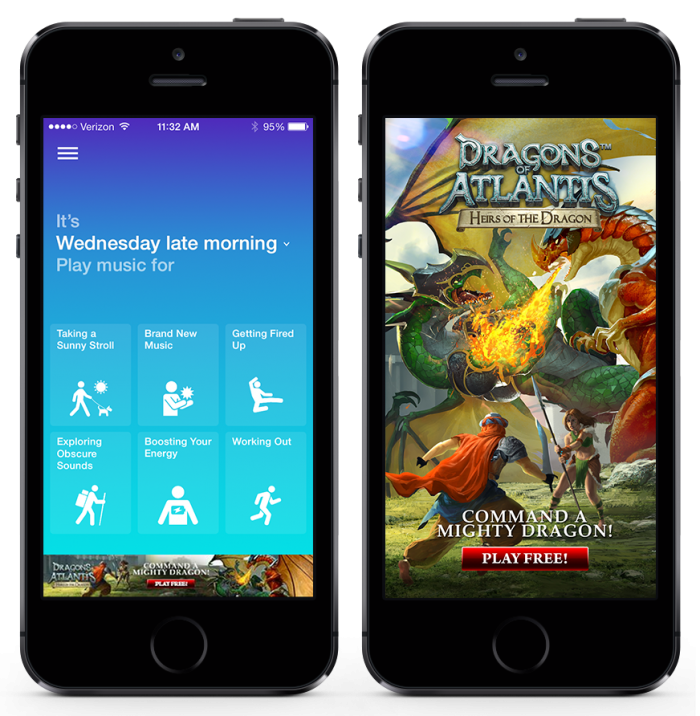
4. Subscriptions
Another clever app monetization strategy is to dive into the subscription economy. In this model, your app can still be free to download, but different services will be offered to users that subscribe than to those who don’t.
Depending on the service your app offers, you may want to offer different kinds of subscriptions based on necessary features.
For example, one of the most popular subscription-based apps on the market is Netflix, which brings in around $25 billion annually with its subscription-based service. In this model, users can choose to pay a low monthly fee to access their app on one screen, or a higher monthly fee to add more screens, HD, and Ultra HD. In this way, Netflix increases revenue generated from families or users who want to share a subscription.

If you choose to use a subscription-based app monetization strategy, consider what kind of subscription packages you may offer. You may want to offer a free, basic, and premium service, or you may want to tailor your packages to different types of users. For example, business, personal, and corporate.
Subscription services can also be used alongside an in-app ad strategy, ensuring your app generates revenue from every user who opens your app.
5. Partnerships
Sponsorships and partnerships can also be a smart app monetization strategy.
If you already have an established app or a large user base, you may engage in strategic partnerships with known brands who want to connect with your audience.
Sponsorships help connect your audience to other relevant brands and can build brand integrity through smart partnerships. On the sponsor’s side, they open up their advertising to new demographics and have the opportunity to push new content to interested consumers.
One way to sell your partnership within your app is to use a splash screen. This content is usually triggered when a user opens the app and will fill the entire screen with a relevant ad. This gives your sponsor maximum visibility and exposure.
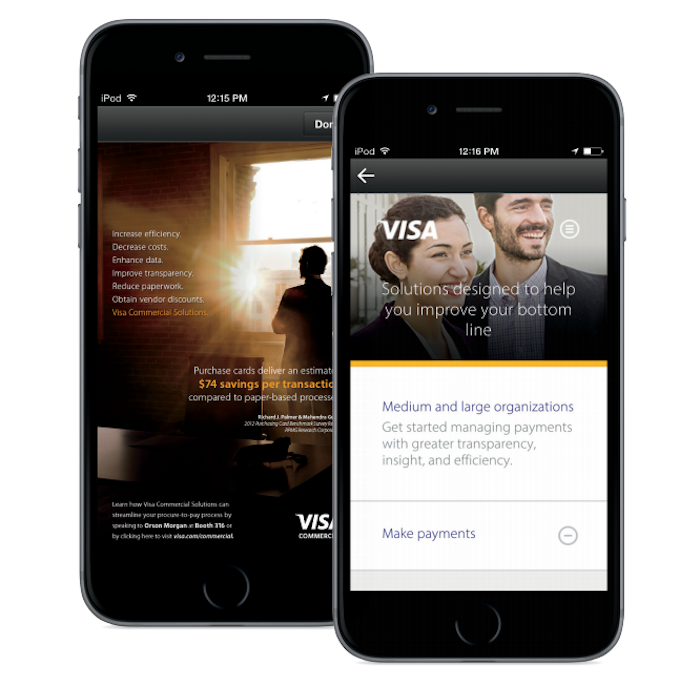
You can also use in-app ads, social media campaigns, and custom in-app content to promote your partnerships as well. A mix of all of these strategies is likely to be the most effective.
6. In-App Purchases
In-app purchases make up a $50.1 billion industry worldwide. This strategy can be especially useful if your app is free, as it offers a way to generate revenue without charging for your service.
The most popular examples of in-app purchases come from the gaming world. Well-loved games like Pokemon Go allow users to buy coins and items with real money. This usually makes the game last longer or allows them to access added features.
According to Pocket Gamer, Pokemon Go made over $2 billion from in-app purchases in the first two years of its launch.
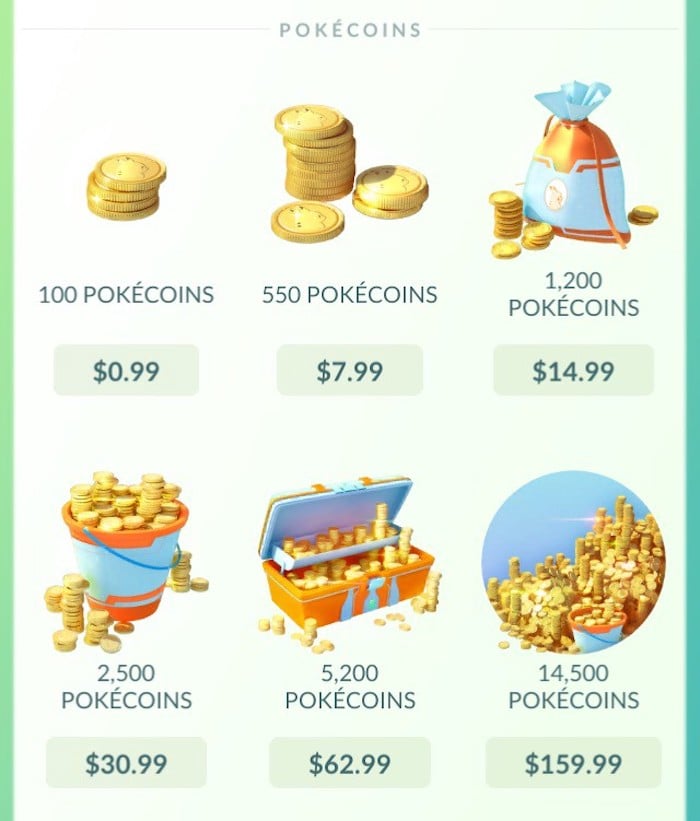
If you want to leverage in-app purchases in your app monetization strategy, consider what features you can offer to enhance your user experience. Successful in-app purchases leverage gamification and offer benefits to the user.
How to Pick an App Monetization Strategy
When considering which app monetization strategy to use for your app, it’s key to consider your audience, service, and capabilities.
While some app monetization strategies may be easy to implement, others need to be considered in the early stages of the development of your app.
Consider the way your app will be used, how you want to market it, and in what ways you want to see it evolve in the future.
Consider your own skills as well. If you’re a world-class marketer, then using an in-app advertising strategy may be a smart move. If you’re a PR whiz, then strategic partnerships and sponsors may be the avenue for you.
Remember always to consider your competition in the market. Do in-depth competitor research and collect data on how similar audiences are using similar apps.
With all of this in place, you’ll be ready to choose an app monetization strategy that will bring your business ongoing returns on your investment.
Tools for App Monetization Strategies
Once you’ve decided on a strategy, you can use specific digital tools to help you implement it.
Here are some of the most popular app monetization tools out right now:
- RevenueCat is a subscription platform for mobile apps. This tool allows you to analyze customer data, build in-app subscription programs, and grow your app online.
- Smartlook is a mobile app analytics tool that can help you gather important user-data to inform your strategic positioning.
- Braze is a customer engagement platform that can help you create personalized customer experiences in real-time, which can contribute to user engagement and loyalty.
- Appy Pie is a tool that lets you build an app without using code. From there, shopping, social, and business integrations can be seamlessly added to monetize your app.
Conclusion
Now that you have a good idea of the app monetization strategies available to you, it’s time to market your mobile app. Remember, a strong marketing strategy contributes to a strong sales strategy, so it’s important to integrate the two to be successful.
While many of the strategies included in this blog represent revenue-building strategies, it’s essential to create inbound app marketing strategies.
From there, it’s all about creating great user experiences that keep your customers coming back for more.
In what ways have you found success with mobile app monetization?
See How My Agency Can Drive Massive Amounts of Traffic to Your Website
- SEO – unlock massive amounts of SEO traffic. See real results.
- Content Marketing – our team creates epic content that will get shared, get links, and attract traffic.
- Paid Media – effective paid strategies with clear ROI.
APPS
Best ASO Tips To Boost Your App Search In 2022

You need your application to be really effective in the overpopulated application market. Then, at that point, you will have to drive downloads to endure. So when it’s all said and done, you must account for yourself. Get your application the consideration it merits.
The uplifting news, however, is that customers love to download applications – last year, we downloaded in excess of 200 billion applications around the world, and that figure is set to increment to 258 billion every year by 2022 as cell phone reception increments.
Assuming you need to be seen and have your application downloaded by however many clients as could reasonably be expected, then, at that point, you should begin by taking a gander at the application store.
Underneath, we’ve assembled probably the best application store improvement methods to assist you with creating more downloads in 2021 and then some…
Start with Your Application Name
The odds are you as of now have an extraordinary name for your application, yet an appropriately advanced application is about significantly more than marking.
Assuming you need to amplify transparency and guarantee you’re showing up when clients look for applications like yours, you ought to remember the primary keywords for your application name or title, comparable to how you’d make a title label while improving a site page.
You could begin with your application name so it tends to be plainly recognized, thus it appears on the home screen of gadgets.
Then, at that point, you can add a scramble or vertical bar prior to adding a few pertinent watchwords to your speciality, or even put your application name in quotes as we did with FORE Business Golf Networking.
Urge Users to Leave Reviews
You could ask for reviews by clients through the means of your site, or through an in-application notice toward the finish of their meeting, yet make sure to restrict the number of pop-ups you execute with the goal that you don’t disturb or disappoint your clients, as this could urge them to erase your application.
We’d support all application engineers and entrepreneurs to react to criticism on their applications, as this can further develop client relations and resolve issues in an open arena.
Zero in on Your Application Depiction
Your application depiction is your principle assemblage of text your landing page content, in a manner of speaking. Utilize a site like KeywordTool.io to discover information on your picked catchphrases to expand your openness. As portrayals are shortened, ensure you remember the main data for the initial three lines of your depiction, and afterwards add things like social confirmation, emoticon, and suggestions to take action to build commitment and downloads.
Incorporate Appealings Screen Captures
Pictures and recordings won’t help your application rank, yet they will expand changes and assist clients with working out whether it’s an application they truly need.
There’s a little guide in empowering clients toward downloading your application if in any case, they’re not going to interface with it, or download and leave a negative survey when they understand it wasn’t what was promoted.
Assuming you need to ‘tart up’ your item page, then, at that point, you can add marking and extra text and data and designs to your recordings and screen capture, yet they ought not to diminish your item.
Pay for App Store or Play Store
As we have SEO and pay-per-click, you need to work one next to the other (one is a gradual methodology with long haul benefits – the other is a speedy success yet requires an endless spending plan), application store promotions can be utilized to get the message out with regards to your new programming and assist you with positioning at the highest point of query items pages – in front of your opposition and enormous names in the application world.
Keep in mind, you’ll need to focus on the right crowd and art an advertisement that will assist you with changing over and that since you’re paying for situations, that doesn’t mean clients will download or cooperate with your application.
Wrapping Up!
You can employ a group of App Store Optimization Services suppliers to benefit a scope of application store improvement administrations, including watchword advancement, resource enhancement, and restriction to guarantee your application is seen by individuals that matter.
We have long periods of involvement in creating and showcasing applications and have assisted different customers with expanding their downloads by infiltrating rewarding and regularly undiscovered business sectors.
Author:
Prachi Gupta likes to write information about Digital Marketing Trends that can help audience to grow their business.
APPS
WhatsApp will finally let users encrypt their chat backups in the cloud

WhatsApp said on Friday it will give its two billion users the option to encrypt their chat backups to the cloud, taking a significant step to put a lid on one of the tricky ways private communication between individuals on the app can be compromised.
The Facebook-owned service has end-to-end encrypted chats between users for more than a decade. But users have had no option but to store their chat backup to their cloud — iCloud on iPhones and Google Drive on Android — in an unencrypted format.
Tapping these unencrypted WhatsApp chat backups on Google and Apple servers is one of the widely known ways law enforcement agencies across the globe have for years been able to access WhatsApp chats of suspect individuals.
Now WhatsApp says it is patching this weak link in the system.
“WhatsApp is the first global messaging service at this scale to offer end-to-end encrypted messaging and backups, and getting there was a really hard technical challenge that required an entirely new framework for key storage and cloud storage across operating systems,” said Facebook’s chief executive Mark Zuckerberg in a post announcing the new feature.
Store your own encryption keys
The company said it has devised a system to enable WhatsApp users on Android and iOS to lock their chat backups with encryption keys. WhatsApp says it will offer users two ways to encrypt their cloud backups, and the feature is optional.
In the “coming weeks,” users on WhatsApp will see an option to generate a 64-digit encryption key to lock their chat backups in the cloud. Users can store the encryption key offline or in a password manager of their choice, or they can create a password that backs up their encryption key in a cloud-based “backup key vault” that WhatsApp has developed. The cloud-stored encryption key can’t be used without the user’s password, which isn’t known by WhatsApp.

Image Credits: WhatsApp/supplied
“We know that some will prefer the 64-digit encryption key whereas others want something they can easily remember, so we will be including both options. Once a user sets their backup password, it is not known to us. They can reset it on their original device if they forget it,” WhatsApp said.
“For the 64-digit key, we will notify users multiple times when they sign up for end-to-end encrypted backups that if they lose their 64-digit key, we will not be able to restore their backup and that they should write it down. Before the setup is complete, we’ll ask users to affirm that they’ve saved their password or 64-digit encryption key.”
A WhatsApp spokesperson told TechCrunch that once an encrypted backup is created, previous copies of the backup will be deleted. “This will happen automatically and there is no action that a user will need to take,” the spokesperson added.
Potential regulatory pushback?
The move to introduce this added layer of privacy is significant and one that could have far-reaching implications.
End-to-end encryption remains a thorny topic of discussion as governments continue to lobby for backdoors. Apple was reportedly pressured to not add encryption to iCloud Backups after the FBI complained, and while Google has offered users the ability to encrypt their data stored in Google Drive, the company allegedly didn’t tell governments before it rolled out the feature.
When asked by TechCrunch whether WhatsApp, or its parent firm Facebook, had consulted with government bodies — or if it had received their support — during the development process of this feature, the company declined to discuss any such conversations.
“People’s messages are deeply personal and as we live more of our lives online, we believe companies should enhance the security they provide their users. By releasing this feature, we are providing our users with the option to add this additional layer of security for their backups if they’d like to, and we’re excited to give our users a meaningful advancement in the safety of their personal messages,” the company told TechCrunch.
WhatsApp also confirmed that it will be rolling out this optional feature in every market where its app is operational. It’s not uncommon for companies to withhold privacy features for legal and regulatory reasons. Apple’s upcoming encrypted browsing feature, for instance, won’t be made available to users in certain authoritarian regimes, such as China, Belarus, Egypt, Kazakhstan, Saudi Arabia, Turkmenistan, Uganda and the Philippines.
At any rate, Friday’s announcement comes days after ProPublica reported that private end-to-end encrypted conversations between two users can be read by human contractors when messages are reported by users.
“Making backups fully encrypted is really hard and it’s particularly hard to make it reliable and simple enough for people to use. No other messaging service at this scale has done this and provided this level of security for people’s messages,” Uzma Barlaskar, product lead for privacy at WhatsApp, told TechCrunch.
“We’ve been working on this problem for many years, and to build this, we had to develop an entirely new framework for key storage and cloud storage that can be used across the world’s largest operating systems and that took time.”
APPS
Dispo launches a test to gauge user interest in selling their photos as NFTs
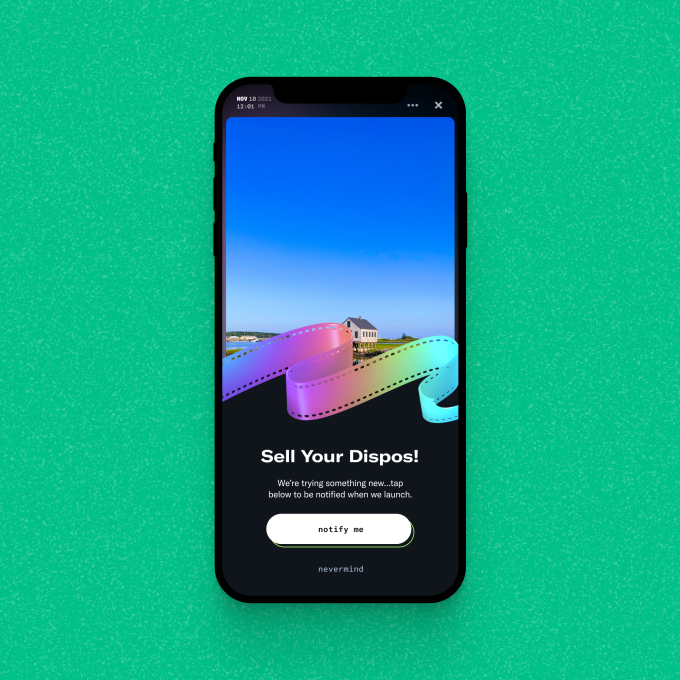
Dispo, the photo-sharing app that emulates disposable cameras, started rolling out a test yesterday that will record user interest in selling photos as NFTs. Some users will now see a sell button on their photos, and when they tap it, they can sign up to be notified when the ability to sell Dispo photos launches.
CEO and co-founder Daniel Liss told TechCrunch that Dispo is still deciding how it will incorporate NFT sales into the app, which is why the platform is piloting a test with its users. Dispo doesn’t know yet what blockchain it would use, if it would partner with an NFT marketplace or what cut of sales Dispo would take.
“I think it’s safe to say from the test that there will be an experience native to the Dispo app,” Liss said. “There are a number of ways it could look — there could be a native experience within Dispo that then connects through an API to another platform, and in turn, they’re our partner, but to the community, it would look native to the Dispo app.”

Image Credits: Dispo
This marks a new direction for the social media app, which seeks to redefine the photo-sharing experience by only letting users see the photos they took at 9 AM the next morning. From Dispo’s perspective, this gimmick helps users share more authentically, since you take one photo and then you’re done — the app isn’t conducive to taking dozens of selfies and posting the “best” image of yourself. But though it only launched in December 2019, Dispo has already faced both buzzy hype and devastating controversy.
Until about a year ago, the app was called David’s Disposables, named after co-founder and YouTuber David Dobrik. The app was downloaded over a million times in the first week after its release and hit No. 1 on the App Store charts. In March 2021, the app dropped its waitlist and relaunched with social network features, but just weeks later, Insider reported sexual assault allegations against a member of Vlog Squad, Dobrik’s YouTube prank ensemble. In response, Spark Capital severed ties with the company, leading to Dobrik’s departure. Other investors like Seven Seven Six and Unshackled Ventures, which contributed to the company’s $20 million Series A round, announced that they would donate any profits from their investments in Dispo to organizations working with survivors of sexual assault.
Liss told TechCrunch in June, when the company confirmed its Series A, that Dobrik’s role with the company was as a marketing partner — Liss has been CEO since the beginning. In light of the controversy, Liss said the app focused on improving the product itself and took a step back from promotion.
According to data from the app analytics firm SensorTower, Dispo has reached an estimated 4.7 million global installs to date since launch. Though the app saw the most downloads in January 2020, when it was installed over 1 million times, the app’s next best month came in March 2021, when it removed its waitlist — that month, about 616,000 people downloaded Dispo. Between March and the end of August, the app was downloaded around 1.4 million times, which is up 118% year over year compared to the same time frame in 2020 — but it should be expected that this year’s numbers would be higher, since last year, the app’s membership was exclusive.

Image Credits: Dispo
Now, with the announcement that Dispo is pursuing NFTs, Liss hopes that his company won’t just change how people post photos, but what the relationship will be between platforms and the content that users create.
“Why NFTs? The most powerful memories of our lives have value. And they have economic value, because we created them, and the past of social media fails to recognize that,” Liss told TechCrunch. “As a result, the only way that a creator with a big following is compensated is by selling directly to a brand, as opposed to profiting from the content itself.”
Adding NFT sales to the app offers Dispo a way to profit from a cut of user sales, but it stands to question how adding NFT sales could impact the community-focused feel of Dispo.
“I think there is tremendous curiosity and interest,” Liss said. “But these problems and questions are why we need more data.”
-

 SEO7 days ago
SEO7 days agoGoogle’s Revamped Documentation Shows 4 Reasons To Refresh Content
-
SEARCHENGINES5 days ago
Daily Search Forum Recap: August 26, 2024
-

 SEARCHENGINES7 days ago
SEARCHENGINES7 days agoGoogle Ranking Bug Fixed, August Core Update Swings, AI Overviews, Google Ads Bug & More
-

 WORDPRESS7 days ago
WORDPRESS7 days agoHow to Secure Your WordPress Store
-
SEARCHENGINES4 days ago
Daily Search Forum Recap: August 27, 2024
-

 AFFILIATE MARKETING7 days ago
AFFILIATE MARKETING7 days agoBusiness Owners are Batting 1,000 With This All-in-One Management Hub
-

 SEARCHENGINES6 days ago
SEARCHENGINES6 days agoGoogle Migrating All To Google Merchant Center Next By September
-
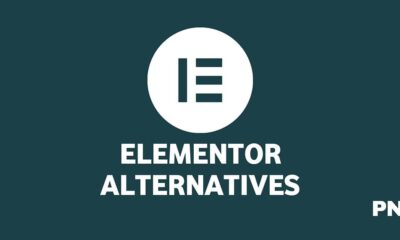
 WORDPRESS5 days ago
WORDPRESS5 days ago9 Best Elementor Alternatives 2024 (Faster Page Builders)














